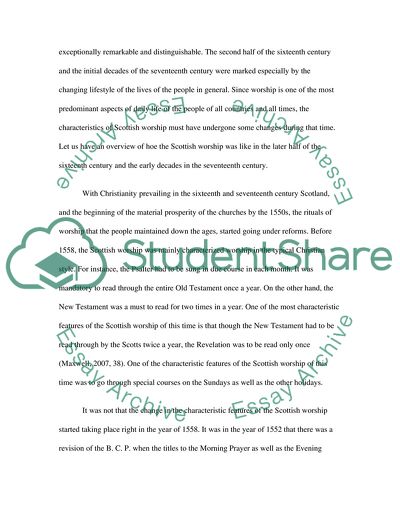Cite this document
(Characteristics of Scottish Worship During 1558-1638 Assignment, n.d.)
Characteristics of Scottish Worship During 1558-1638 Assignment. https://studentshare.org/history/1720227-characteristics-of-scottish-worship-during-1558-1638
Characteristics of Scottish Worship During 1558-1638 Assignment. https://studentshare.org/history/1720227-characteristics-of-scottish-worship-during-1558-1638
(Characteristics of Scottish Worship During 1558-1638 Assignment)
Characteristics of Scottish Worship During 1558-1638 Assignment. https://studentshare.org/history/1720227-characteristics-of-scottish-worship-during-1558-1638.
Characteristics of Scottish Worship During 1558-1638 Assignment. https://studentshare.org/history/1720227-characteristics-of-scottish-worship-during-1558-1638.
“Characteristics of Scottish Worship During 1558-1638 Assignment”. https://studentshare.org/history/1720227-characteristics-of-scottish-worship-during-1558-1638.


